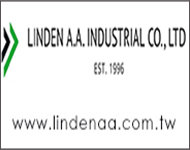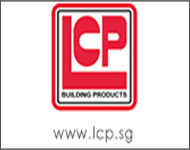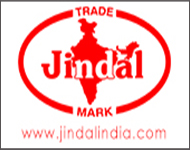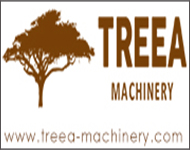- Groundbreaking Ceremony Marks Start of Sh50 Billion MTRH Construction Project
- TANROADS-World Bank Alliance Powers Massive Road and Airport Upgrades Across Tanzania
- Kenya Breaks Ground on Sh5 Billion China-Kenya International Commerce Center in Nairobi
- Construction Begins on $2.15 Billion Uvinza–Musongati Railway Project
- Kenya Secures Chinese Funding for Sh5 Billion Nithi Bridge Reconstruction
- Construction Nears for ELCT Facility Backed by Samia’s 250 Million Boost
- KeNHA Kicks Off Construction of Major Kenya-South Sudan Road Project with AfDB Support
- Tanzania Government Allocates 100 Billion Shillings for Bridge Constructions in Lindi
- $46 Million Deal Signed for Crucial Isiolo-Mandera Road Construction Project
- Tanzania Government Set to Sign Agreement for Dodoma Stadium Construction
Tanzania: Local Cement Firms Do Well in Competition
 THE Tanzania Portland Cement Company (TPCC) and Tanga Cement Company have weathered challenges of the so-called cheap imports and new comers in the industry to post huge success last year in terms of profitability and output.
THE Tanzania Portland Cement Company (TPCC) and Tanga Cement Company have weathered challenges of the so-called cheap imports and new comers in the industry to post huge success last year in terms of profitability and output.
The two oldest cement giants are both in expansion move to increase capacity ahead of demand. TPCC which trades at the Dar es Salaam Stock Exchange (DSE) as Twiga is investing in a new cement mill, while Tanga Cement, trading at DSE as Simba have pumped in more money on a new kiln.
Last year Simba made a historic sale after it managed to sell over one million tonnes of cement, pushing up its net profit by 52 per cent. In the same year, Twiga despite all the odds retained market leadership after increased net profit by 22 per cent.
This remarkable achievement was received well by investors who continue to demand for the two listed cement firms at DSE, since the start of this year. DSE data shows that Simba shares appreciated by 0.83 per cent to 2,420/- while Twiga gained by 0.77 per cent to 2,620/- in the last three months.
Nevertheless, Simba, based in Tanga, sales volume grew up by 21 per cent to 257.92bn/- as a result of export sales that rose by 55 per cent last year, with pretax profit increasing to 55.93bn/- from 37.08bn/-.
Talking about export, Twiga said: "the new mill which is expected to be completed by mid-2014 will make TPCC the biggest cement producer in the subregion," said the firm's Board Chairman, Mr Jean - Marc Junon. The cement industry, looking at imports perception, has excelled despite the East African Community (EAC) states decision for the fourth time not to reinstate suspended duties on cement in the Common External Tariff.
May be the imports helped somewhat for the industry to look further internally and externally on its position and strategies accordingly to come up remarkably. Simba's acting Chairman, Prof Samuel His counterpart, Mr Junon, said despite the increased competition, "the company (Twiga) managed to increase dispatched volumes by 5 per cent. The turnover increased by about 15 per cent compared to 2011".
The output and sales increment was the results of cost cutting measures and also improving the availability of quality electricity. "The overhead costs were strictly controlled and the company's operation profit for the year increased by 34 per cent," Prof Wangwe said, adding that improved supply of electricity as compared to last year's also contributed to the cement manufacturer's profitability.
The costs also subdued following the fact that Simba used merely 1.91 per cent of own power generation compared to 6.9 per cent of 2011. On other hand, Twiga said the increase in cost of sales over the previous year is mainly due to inflation and energy costs. "(However) with improved efficiencies, the operating income increased by over 25 per cent compared with the previous year".
Then there is a question of repositioning of the two big cement manufacturers to counter competition that comes from new comers, which are in initial factor set up processes. Simba said its board of directors has approved the construction of the second clinker at the factory mid this year to increase output in the years ahead and meet demand, getting rid of imports.
The project, scheduled to be completed in 2015, will increase clinker production capability by 600,000 tons per year, more than double the current capacity. "This additional capacity is expected to satisfy the consistently high demand for cement from both the local and export markets," Prof Wangwe said.
Twiga said "is positioned to continue its market leadership, after completing the upgrade of one of the old kilns." And in another aspect in this year, it has also entered into a new business line by producing aggregates for the growing construction sector.
The cement industry development and achievements was pushed by a good economic outlook. In 2012, GDP grew by slightly below 6.4 per cent and this year forecast to go up by 6.8 per cent and construction sector, went up at a rate of around 8 per cent.
Last year, an Equity Research on Cement Sector Local Listed Companies conducted by Tanzania Securities, projected that the country is poised to become a net exporter of cement in the next two years. The projection is based on the fact that currently the country's production capacity stands at 3.25 million tonnes per annum that is expected to double in the next three years to 6.75 million tonnes.
And, according to the report, the cement industry is fully supported by strong demand from import dependent neighbouring countries of Burundi, Rwanda and Democratic Republic of Congo (DRC). "We consider the Tanzania's prevailing price of 120 US dollars per tonne to be competitively very low versus West Africa's 200 US dollars per tonne," the research analysts said:
"Our projections show that prices will continue to fall to between 90-105 US dollars per tonne in the medium term and translate into higher export levels to available markets (of Rwanda, Burundi, DRC or Zambia (with a 200 US dollars per tonne price) with higher prices."
Wangwe, said the firm overcame the industry challenges -- one of them being cheap imports to achieve the milestone sales. "The sales volume increase marks a significant milestone for Simba Cement, being the first time the company sold over one million tonnes of cement in one year," he said in a statement.
Source : abdas.org
Posted on : 30 Nov,-0001
Buildmart is Africa's leading directory and market news website for the building and construction industry | Kenya | Tanzania | Rwanda | Ethiopia
Exhibitions In Africa
- 27th Buildexpo Kenya 2026
KICC, Nairobi, kenya
08 - 10, July 2026 - 11th Afriwood Kenya 2026
KICC, Nairobi, kenya
08 - 10, July 2026 - 11th LightExpo Kenya 2026
KICC, Nairobi, kenya
08 - 10, July 2026 - 10th Minexpo Africa 2026
KICC, Nairobi, Kenya
08 - 10, July 2026 - 27th Buildexpo Tanzania 2026
Diamond Jubilee Expo Center, Dar-es-Salaam, Tanzania
23 - 25, Sep 2026 - 10th Afriwood Tanzania 2026
Diamond Jubilee Expo Center, Dar-es-Salaam, Tanzania
23 - 25, Sep 2026 - 10th LightExpo Tanzania 2026
Diamond Jubilee Expo Center, Dar-es-Salaam, Tanzania
23 - 25, Sep 2026 - 10th Minexpo Tanzania 2026
Diamond Jubilee Expo Center, Dar-es-Salaam, Tanzania
28 - 30, Oct 2026





















